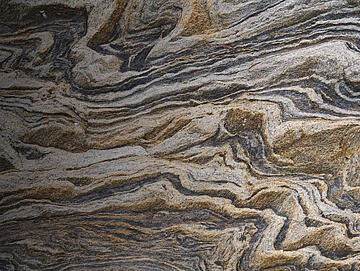
Analysis of Rare Earth Elements by ICP-OES and ICP-MS − Potentials and Limitations Application Note · PlasmaQuant 9100 Elite, PlasmaQuant MS Elite
Challenge
- Interference-free determination of rare earth elements at trace and ultratrace levels in geological materials.
Solution
- High-Resolution Array ICP-OES on PlasmaQuant 9100 Elite resolving spectral interferences and high-sensitivity ICP-MS on Plasma Quant MS Elite using a method without traditional mathematical correction of polyatomic interferences.
Introduction
Contrary to their name, rare earth elements (REE) make up a substantial part of the earth’s crust, where they occur dispersed among various minerals. In recent years, there has been a rising demand for REE in the fields of user electronics, catalysis, optical displays, high-performance magnets, batteries, aerospace manufacturing and medical applications. Therefore, reliable trace analysis procedures are needed in the assessment of potential mining sites, process control solutions (largely comprising of rare earth oxides, REO) and quality control of high-purity REE. Furthermore, there is a large interest from academic research in earth sciences involving trace and ultratrace level determination of REE in geology, geochemistry and mineralogy.
Quantification of REE in geological materials by Inductively Coupled Plasma Optical Emission Spectrometry (ICP-OES) is one of the most challenging analytical routines. Often containing large amounts of alumina and silica, sulfur and refractory metals, etc., the high matrix contents of digested samples require exceptional plasma robustness. This is especially the case when trace levels of REE ought to be detected and sample dilution has to be avoided. Adverse REO formation in plasma tail and severe spectral interferences due to the wealth of emission lines affect the detectability of REE by ICP-MS (Inductively Coupled Plasma Mass Spectrometry) or ICP-OES. The High-Resolution Array ICP-OES PlasmaQuant 9100 Elite is capable to overcome these barriers. With its fastsequential echelle-double monochromatic optical bench with versatile CCD detection, it nearly doubles the spectral resolution and halves the total analysis time with respect to currently available ICP-OES instrumentation with PMT detection that is solely used for REE analysis.
ICP-MS is a popular analytical technique for the determination of REE, from raw materials including soils, rocks and ores to impurities in highly refined rare earth products. The technique offers a fast multi-element REE detection at concentrations down to the parts-per-quadrillion (ppq) range. However, challenges often faced by scientists in REE measurement include the occurrence of polyatomic and isobaric interferences that are not resolved by quadrupole ICP-MS. Collision gases can be applied to remove polyatomic interferences. With its integrated Collision Reaction Cell technology, the PlasmaQuant PQ MS Elite offers an effective solution for such requirements. Furthermore sample preparation can also impose analytical constraints and must be considered in order to obtain accurate analytical data.
Download the complete Application Note
Contact us
The newsletter of Analytik Jena frequently keeps you posted about:
- News
- Trends and developments
- Events
